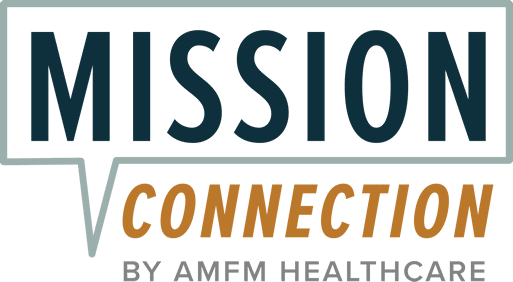Emotional & Behavioral Symptoms in Adults: Signs, Causes, and Help

Emotional and behavioral symptoms are often linked to mental health issues and are extremely common among adults. In fact, nearly one in five people experiences a mental health concern in any given year.1
Feeling sad, anxious, or irritable from time to time is a normal part of life. Everyone has difficult days. Yet, a problem can arise when these symptoms persist and intensify in ways that begin to interfere with daily functioning. When emotional or behavioral changes affect life, they may indicate that an underlying mental health condition needs attention.
Yet it can be difficult to pinpoint which mental health issues are causing emotional and behavioral symptoms in adults – which is where a mental health professional can help. A healthcare provider can support you in getting to the root causes of symptoms and advise on the right approaches to treatment.
This page can also help you better understand emotional and behavioral symptoms in adults, exploring:
- What emotional symptoms in adults are
- How to recognize behavioral health signs in adults
- Causes of emotional and behavioral symptoms in adults
- The impacts of symptoms on adults’ lives
- Ways of coping with emotional distress
- Where to find professional support

Understanding Emotional Symptoms in Adults
Emotional symptoms are the feelings and mood changes a person has inside of themselves. They’re typically an outlet for the human mind to show stress, sadness, worry, anger, or numbness.2 These symptoms are often short and tied to a single event (such as losing a job). However, they can be ongoing, lasting weeks or months, affecting quality of life.
The following are some emotional symptoms displayed by adults in response to different situations:
- Sadness that doesn’t seem to go away
- Constant worry or nervousness
- Getting irritated more often than usual
- Mood shifts that happen suddenly or without a clear reason
- Feeling emotionally flat, numb, or disconnected
- A sense of hopelessness about the future
- Strong feelings of guilt and believing you’re not good enough
- Crying more easily or more often than before
- Trouble making everyday decisions
- Intense fear or panic that comes on suddenly
- Losing interest in activities once enjoyed
Recognizing Behavioral Health Signs in Adults
Behavioral symptoms are the actions or observable changes in what a person does, rather than what they feel inside.
Unlike emotional symptoms, these symptoms show up outwardly through changes in habits, reactions in social settings, visible patterns of acting out, withdrawing, or altering routines. However, they’re usually expressions of emotional symptoms. Therefore, behavioral signs can make someone’s mental health issues visible not just to themselves, but also to people around them.
Behavior tends to influence consequences more directly, for example, missed work, relationship strain, and physical health issues from neglect (like sleep, diet, and self-care).2 So, it can significantly impact the daily ability to function.
Some behavioral changes that may show up when behavioral health is affected include:
- Withdrawal from social situations or avoiding people
- Sudden, strong changes in daily routines
- Neglect of responsibilities
- Acting impulsively
- Increased substance use
- Aggressive behavior or frequent outbursts of anger
- Loss of interest in once enjoyed activities
- Difficulty sticking to commitments
- Irregular attendance at work, school, or social obligations
- Problems with focus and concentration leading to mistakes
- Avoidance of places or activities because they feel overwhelming
- Changes in sexual behavior, whether a loss of desire or acting in risky ways
- Self-harm behaviors
- Hallucinations or delusions
- Detachment from reality
- Physical neglect, for example, ignoring medical care or letting the home or personal space fall apart
Causes of Emotional and Behavioral Symptoms in Adults
There are many potential underlying reasons why someone may experience emotional and behavioral symptoms. These include biological, psychological, and environmental factors, and we explore each of these potential contributors below.
Biological and Psychological Factors
Some causes of emotional and behavioral symptoms lie inside our bodies.
Research shows that genes play a significant role in emotional health. For example, a large study on over 30,000 adults in Russia found that certain genetic markers are linked with higher anxiety and emotional instability.4
Also, studies on twins reveal that genetic risk for depression or mood disorders in adults shows up early in childhood or adolescence. This finding suggests that inherited factors influence emotional symptoms over the lifespan.5
In addition, our brain contains chemicals like serotonin, dopamine, and noradrenaline that regulate mood, fear, motivation, sleep, and anxiety. Disruptions in these chemicals can lead to emotional symptoms.
Any kind of persistent stress can cause elevated levels of stress hormones (like cortisol), which, over time, can damage brain circuits. Chronic stress and trauma also change the structure of areas in the brain responsible for emotional and behavioral regulation. These include:6
- The hippocampus, which controls memory and mood regulation
- The amygdala, which is the fear and emotional response control centre
- The prefrontal cortex, which is involved in decision-making
Environmental Factors
The world around us often plays an important role in the development of emotional and behavioral symptoms. For example, research studies show that work environments with high demands and low support are linked to poor mental health outcomes.7
Similarly, relationship struggles can trigger emotional distress. When people feel they have nobody to talk to, or when relationships are a source of ongoing tension, emotional symptoms can become more frequent.
Also, research indicates childhood maltreatment is linked to adult brain changes and higher rates of emotional and behavioral issues.8 For example, early attachment problems may show up later in life as difficulty managing emotions and forming stable relationships.
Above all, humans need connection. Therefore, isolation, loneliness, housing instability, and unsupportive social environments could all worsen emotional symptoms. In a Norwegian study, researchers found that unsupportive neighborhoods, noise, fear associated with unsafe living areas, and lack of community cohesion were strongly associated with behavioral and emotional symptoms.9 In contrast, a Canadian study showed that good social support strongly improved life satisfaction and reduced emotional symptoms.10
Complications of Emotional and Behavioral Symptoms in Adults
Unfortunately, when emotional or behavioral symptoms are left unrecognized, they can lead to a cascade of further problems.
For instance, emotional distress and behavioral changes are linked with poorer outcomes in people who also have chronic medical illnesses. In support of this link, one study on adults living with diabetes and hypertension found that those who also had depression or anxiety had much lower health-related quality of life. They also had much higher health-related costs.11
In another study, elderly patients who showed emotional symptoms had longer hospital stays and higher costs compared to patients without these symptoms.12
Emotional and behavioral symptoms can also damage relationships – if someone is always irritable or withdrawn, their friends and family tend to notice. As a result, a feedback loop may form where emotional distress leads to behavioral withdrawal, which can lead to less social support and increased distress.
Further, adults with emotional and behavioral symptoms also often find it hard to concentrate, meet deadlines, and keep up productivity. Therefore, their work and home lives can be significantly disrupted.
Coping With Emotional Distress
It’s completely normal to have a bad day now and then. We all feel sad, frustrated, or anxious from time to time. However, emotional distress can become a concern when symptoms persist for days in a row and interfere with daily living.
Below are some practical strategies that you can use to take care of emotional and behavioral symptoms:
- Mindfulness: Mindfulness exercises (like focusing on breathing, body sensations, or sounds) can help ground your attention when emotions feel overwhelming. Studies even show that mindfulness-based interventions can reduce emotion dysregulation and help with various clinical conditions.13
- Cognitive reappraisal (reframing thoughts): This is a technique where someone practices looking at the same situation through a different lens, so it doesn’t trigger an emotional response.14 For example, if you think, I always mess things up, you could reframe it to: I made a mistake this time, but I’ve succeeded many times before.
- Attention redirection: Any time your emotions become too strong to handle, you could direct your attention towards a simple activity like walking, reading, listening to music, or cleaning.
- Structural self-care: Regulating your emotions and behaviors often requires a structural approach to sleep, nutrition, and movement through walking or mild exercise. For example, you could create a sleep routine to improve your quality of rest.
- Social connection: Humans are social beings, and sharing emotional burdens typically eases us. So, when in distress, try talking with a trusted friend or family member to reduce feelings of isolation.
Mental Health Treatment Options for Emotional and Behavioral Symptoms
When emotional or behavioral symptoms start to affect your daily life, it’s a good idea to seek professional treatment for them. Modern treatment approaches for emotional and behavioral symptoms in adults include:
Psychological Therapy
Talking therapies are the first-line option for many emotional problems. In fact, cognitive-behavioural therapy (CBT) is the most studied psychotherapy for adult depression and anxiety.
Decades of experiments show CBT reduces emotional symptoms and improves behavioral functioning.15 It can be delivered face-to-face, in groups, or online, and it teaches practical skills people can use long after therapy ends.
Other structured therapies have also been studied for emotional issues in adults. Dialectical behavior therapy (DBT), for example, can help people who struggle with emotional regulation and impulsive or self-harming behaviors.
Behavioral activation may also help, as it focuses on increasing rewarding activities and is especially useful for depression.
Finally, brief psychological interventions, delivered in primary care or by trained non-specialists, can also reduce anxiety and depressive symptoms. The World Health Organization recommends scalable psychological interventions because they are effective and can be adapted for many settings.16
Medication
Medicines are sometimes used to reduce symptom severity – when appropriate.
For example, antidepressants may reduce symptoms of major depression and many anxiety disorders. For bipolar disorder and mood instability, mood stabilizers (like lithium or some anticonvulsants) are commonly used. These medicines can help prevent mood swings and reduce the risk of relapse.
Antipsychotic medicines are typically used when psychosis is present, or sometimes as an add-on when mood or anxiety symptoms are severe and not responding to other treatments.
Medications work by changing the levels of brain chemicals that affect mood and anxiety. They may relieve symptoms faster than therapy alone, but they could also have side effects and usually work best when monitored by a clinician.
Specialized and Crisis Care
Some situations need urgent, specialized, or intensive help. Examples include when someone is thinking about suicide, engaging in self-harm, experiencing hallucinations, or feeling unable to control their behavior. Crisis services are available 24/7 and provide immediate evaluation to assess safety and decide on the best level of care.
Further, research shows that early crisis intervention significantly lowers the risk of suicide attempts and reduces the chance of needing repeated hospitalizations.17
After crisis intervention, for some people, a short stay in an inpatient psychiatric unit is the safest option. Hospitals can provide a structured environment, round-the-clock observation, and access to medications that work quickly to ease acute symptoms.
Seek Help for Emotional and Behavioral Symptoms at Mission Connection
At Mission Connection, we believe that seeking help for your emotional and behavioral struggles is an act of self-care. This is because it often leads to lasting improvement in both mental and physical health.
We offer a flexible, comprehensive outpatient program that fits into your schedule, whether in person or through telehealth. Our team of licensed providers uses evidence-based approaches such as CBT, DBT, mindfulness, and experiential group work to help you build skills that last well beyond treatment.
Most importantly, Mission Connection fosters healing through community and connection, so you never feel alone in your recovery journey. Reach out to us today to get started.

References
- National Institute of Mental Health. (2024, September). Mental illness. National Institute of Mental Health. https://www.nimh.nih.gov/health/statistics/mental-illness
- Hyman, S., Parikh, R., Collins, P. Y., & Patel, V. (2016). Adult mental disorders. In Disease Control Priorities, Third Edition (Volume 4): Mental, Neurological, and Substance Use Disorders (Vol. 4, pp. 67–86). https://doi.org/10.1596/978-1-4648-0426-7_ch4
- Defar, S., Abraham, Y., Reta, Y., et al. (2023). Health related quality of life among people with mental illness: The role of socio-clinical characteristics and level of functional disability. Frontiers in Public Health, 11, 1134032. https://doi.org/10.3389/fpubh.2023.1134032
- Yakovchik, A. Y., Tolynyova, D. V., Kashtanova, D. A., et al. (2024). Genetics of psycho-emotional well-being: Genome-wide association study and polygenic risk score analysis. Frontiers in Psychiatry, 14. https://doi.org/10.3389/fpsyt.2023.1188427
- Rice, F. (2010). Genetics of childhood and adolescent depression: Insights into etiological heterogeneity and challenges for future genomic research. Genome Medicine, 2(9), 68. https://doi.org/10.1186/gm189
- Bremner, J. D. (2006). Traumatic stress: Effects on the brain. Dialogues in Clinical Neuroscience, 8(4), 445–461. https://doi.org/10.31887/dcns.2006.8.4/jbremner
- Chireh, B., Essien, S. K., Swerhun, K., D’Arcy, C., & Acharibasam, J. W. (2025). Workplace stressors and mental health outcomes among personal support workers: A systematic review. International Journal of Nursing Studies, 168, 105093. https://doi.org/10.1016/j.ijnurstu.2025.105093
- Chaney, A., Carballedo, A., Amico, F., et al. (2014). Effect of childhood maltreatment on brain structure in adult patients with major depressive disorder and healthy participants. Journal of Psychiatry & Neuroscience, 39(1), 50–59. https://doi.org/10.1503/jpn.120208
- Bjørndal, L. D., Ebrahimi, O. V., Lan, X., Nes, R. B., & Røysamb, E. (2023). Mental health and environmental factors in adults: A population-based network analysis. The American Psychologist, 79(3). https://doi.org/10.1037/amp0001208
- Gan, D. R. Y., Wister, A. V., & Best, J. R. (2022). Environmental influences on life satisfaction and depressive symptoms among older adults with multimorbidity: Path analysis through loneliness in the Canadian Longitudinal Study on Aging. The Gerontologist. https://doi.org/10.1093/geront/gnac004
- Alwhaibi, M. (2024). Depression, anxiety, and health-related quality of life in adults with type 2 diabetes. Journal of Clinical Medicine, 13(20), 6028. https://doi.org/10.3390/jcm13206028
- Ren, D., Wang, X., Shen, H., Li, T., & Sun, X. (2025). The impact of depression and associated anxiety symptoms on clinical outcomes in elderly inpatients with digestive system diseases in Southwest China: A retrospective cohort study. BMC Psychiatry, 25(1). https://doi.org/10.1186/s12888-025-07038-1
- Geiger, P. J., Boggero, I. A., Brake, C. A., et al. (2015). Mindfulness-based interventions for older adults: A review of the effects on physical and emotional well-being. Mindfulness, 7(2), 296–307. https://doi.org/10.1007/s12671-015-0444-1
- Troy, A. S., Shallcross, A. J., Brunner, A., Friedman, R., & Jones, M. C. (2018). Cognitive reappraisal and acceptance: Effects on emotion, physiology, and perceived cognitive costs. Emotion, 18(1), 58–74. https://doi.org/10.1037/emo0000371
- Nakao, M., Shirotsuki, K., & Sugaya, N. (2021). Cognitive–behavioral therapy for management of mental health and stress-related disorders: Recent advances in techniques and technologies. BioPsychoSocial Medicine, 15(1), 16. https://doi.org/10.1186/s13030-021-00219-w
- World Health Organization. (2024). Innovations in psychological interventions. World Health Organization. https://www.who.int/teams/mental-health-and-substance-use/treatment-care/innovations-in-psychological-interventions
- Tahmazov, E., Bosse, J., Glemain, B., et al. (2024, November 27). Impact of early intervention for early psychosis on suicidal behavior—A meta‐analysis. Acta Psychiatrica Scandinavica. https://doi.org/10.1111/acps.13773
